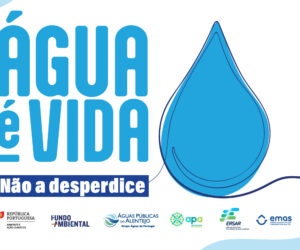 It is an ambitious project with a total cost of 500 million, but promoters say it is for the “long term” and with “several phases”. Project in the municipality of Mértola, district of Beja, foresees wind energy, solar, green hydrogen and storage through pumped water.
It is an ambitious project with a total cost of 500 million, but promoters say it is for the “long term” and with “several phases”. Project in the municipality of Mértola, district of Beja, foresees wind energy, solar, green hydrogen and storage through pumped water.
For now, The objective is to move forward with 100 MW of solar energy. Promoters guarantee that they are not interested in mining exploration.
In Roman times, gold was already mined, silver and copper in the São Domingos mine area, district of Beja. In its industrial phase, produced for more than 100 years until its closure in 1966. The mining project in the Beja district was explored by the English company Mason & Barry.
Here more than 20 million tons of ore. A railway line transported the ore to the old river port of Pomarão, going down the Guadiana River to Vila Real de Santo António. It was here that the first power plant in Alentejo was built. At its peak, employed, at any given moment, more than a thousand workers.
Back, an area with contaminated soil remained, as is the rule in mining projects. In 2016, the start of the decontamination program was announced, but there is now a new project for this area.
In 2023, a group of German investors bought the now deactivated São Domingos mine in Alentejo, municipality of Mértola, and have a project to build a solar and wind power plant, and a green hydrogen project.
La Sabina Green Energies is the owner of the two thousand hectares of land where it was mined, mainly, copper and sulfur for the production of sulfuric acid, as well as other secondary products: lead, nickel, cobalt, gold, talk, cadmium, arsenic antimony and tin.
“We are three German investors. We bought shares in the company La Sabina Mineira Turística last year. I had ties because my father invested in this company 30 years", said, ao I, about dos investidores Hubertus Prinz zu Hohenlohe-Langenburg, which did not reveal the values of the operation. “Our approach is to produce renewable energy, because the location is perfect for producing electricity from solar photovoltaic or wind, and also to produce green hydrogen for the Portuguese market”.
“We also want to recultivate the land that was previously used as a mine, although some parts are still contaminated and need to be treated. We are an ecological project, long-term, with several steps. Let’s start on a small scale and try to grow to achieve our goals.”, adds this German lawyer based in Munich, specialized in energy and has invested in the sector.
The company has been collaborating with the Minas Gerais Development Company (EDM), public company responsible for mine decontamination, at a cost of 20 million. Two phases completed, There are now four phases left for decontamination to be completed.
For now, In the first phase, the objective is to move forward with a 100 MW of solar energy, with promoters estimating a cost of 28 million euros for this project, that is to be licensed, having already submitted the project to the General Directorate of Energy and Geology (DGEG).
To finance the project, have their own capital, bank financing and European funds. Only then do they move on to the wind project with 80 MW, in the first phase. On green hydrogen, The objective is to have an initial electrolyzer with 7,5 MW of electrolysis capacity.
With two thousand hectares of land, promoters have already been approached by other promoters, with the aim of leasing land for the installation of renewable energy projects, but they clarify that the objective at this moment is to move forward with their own projects.
The project also aims to create storage, through hydroelectric pumping. “There are possibilities in the mine to have a water reservoir and use this to pump hydro. At night, when there is no sun, or when there is no wind, water is pumped to produce energy for the electrolyzer”, said, in turn, Jurgen Magnus, another of the German investors, based in Belgium, and general director of the project.
About the agriculture project, Hubertus Prinz zu Hohenlohe-Langenburg highlights that one possibility is the “recultivation of the open pit mine”, using “artificial soil”. “It is possible to grow something even under photovoltaic panels. I was informed by EDM that they have already done research on this type of recultivation. I think it's very interesting because they grow plants that make the soil more fertile, and you can let the animals graze. We are doing something for nature, on the one hand, and on the other, we are creating agricultural possibilities, that don't exist yet because the soil is too thin, there is a lot of erosion”.
In August 2023, the newspaper “Público” reported that the company Almina – Minas do Alentejo SA was going to carry out research work in a territory of 500 km2 in the municipalities of Mértola and Castro Verde, which encompasses the areas of the former São Domingos and Chança mines.
But those responsible guarantee that they are not interested in mining exploration. “We own the land, but we do not have the resources, who are detained by Portugal. We don't have a license [mining exploration] and we won't ask for one. That’s not our business.”, diz Hubertus Prince of Hohenlohe-Langenburg. “The money is in what you make of the land. As we are not a mining company, It's not our focus. That [mining exploration] depends on the Government. It depends on the investor they have and we would have to fix that”.
Inside the property is the Alentejo Star Hotel, but it is exploited by third parties.
Project features: Photovoltaic capacity – 500 MW, Wind capacity – 50 MW, Electrolysis capacity – 100 MW, Hydrogen production – 9 thousand to 10 thousand tons/year and expected investment: 500 million in two to three phases
News: Lidador News/ Jornaleconomico.sapo.pt
























